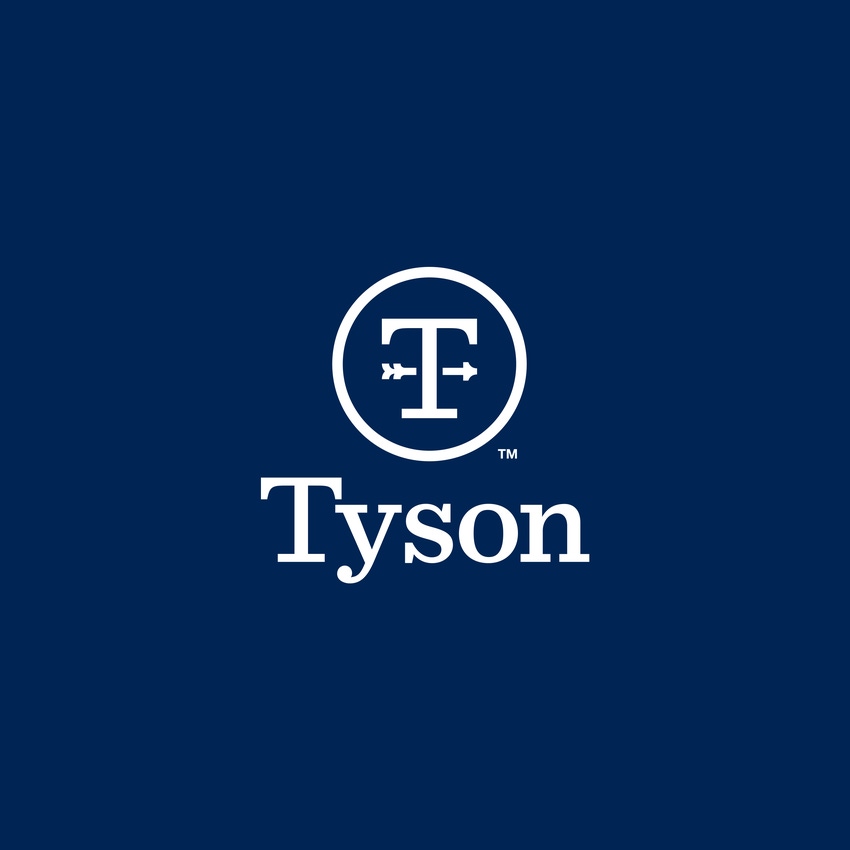Results driven by prepared foods and total company sales growth.

Tyson Foods Inc. posted significantly higher results for the first quarter of 2018, with record generally accepted accounting principles (GAAP) earnings per share (EPS) of $4.40, up 177% from last year, and a record adjusted EPS of $1.81, up 14% from last year. Net income for the quarter was $1.63 billion, up from $593 million during the same period last year. The company reported that it also reduced debt by more than $500 million as well as realized $37 million of Financial Fitness Program cost savings.
As many companies have been reporting in their quarterly results, Tyson noted the recent government tax reform has also benefited its first quarter. The company said the lower enacted tax rates positively affected the first-quarter adjusted EPS by 21 cents but added that a total fiscal 2018 benefit of approximately 85 cents on an adjusted basis is expected.
“We expect the adjusted effective tax rate to be approximately 24% in fiscal 2018 and 25% in fiscal 2019,” Tyson noted. “Incremental tax reform cash flow in fiscal 2018 expected to exceed $300 million, which we intend to invest in our frontline team members and to sustainably grow our businesses.”
The company also reported that more than $100 million in one-time cash bonuses to be paid to eligible frontline employees in the second quarter of fiscal 2018.
“At Tyson Foods, we’re creating a modern food company focused on protein,” Tyson president and chief executive officer Tom Hayes said. “Building on our momentum from a record year in fiscal ’17, we’re off to a strong start in fiscal ’18. We delivered record adjusted EPS and our second-strongest quarter of operating income in (the first quarter), with operating cash flows of more than $1.1 billion."
Hayes said the strength and diversity of the company’s portfolio is evident. “We drove solid results in each of our segments: beef, pork, chicken and prepared foods. We grew topline sales, with our retail and foodservice sales both outpacing the industry," he said. "We’re encouraged by the position we’re in today.”
Looking ahead, Hayes said the company is confident in the ability to continue growing the business. “Demand for protein continues to rise, and we’re well-positioned to take advantage of that opportunity -- and to fulfill our aspiration of sustainably feeding the world,” he said.
Segment results
In Tyson’s Beef segment, sales volume increased due to improved availability of cattle supply, stronger demand for our beef products and increased exports.
“Average sales price increased as demand for our beef products and strong exports outpaced the increase in live cattle supplies,” the company noted.
Although below the record results of the prior year, the segment’s operating income remained strong as Tyson continued to maximize revenues relative to the higher live fed cattle costs, partially offset by increased labor and freight costs.
Sales volume in the Pork segment decreased, the result of balancing supply with customer demand during a period of margin compression. The company said average sales price increased due to price increases associated with higher livestock costs.
“We were able to maintain strong operating margins, although below prior year's record results, by maximizing our revenues relative to the live hog markets due to operational and mix performance, which were partially offset by margin compression and higher labor and freight costs,” Tyson said.
Unlike pork, sales volume in the Chicken segment was up due to strong demand for chicken products, along with the incremental volume from the AdvancePierre acquisition. Average sales price increased due to sales mix changes. Operating income benefited from $14 million of Financial Fitness Program cost savings, the positive incremental impact of AdvancePierre and slightly lower feed costs, partially offset by increased labor, freight and growout expenses.
The Prepared Foods posted higher sales volume primarily the result of incremental volumes from the AdvancePierre acquisition. Average sales price increased from higher input costs of $45 million and product mix, which was positively impacted by the acquisition of AdvancePierre. Operating income increased due to $24 million of Financial Fitness Program cost savings, improved mix and the positive incremental impact of AdvancePierre, partially offset by higher input and freight costs.
Outlook
Tyson pointed out that the U.S. Department of Agriculture is forecasting domestic protein production (beef, pork, chicken and turkey) to increase approximately 3% from fiscal 2017 levels. Stronger export markets should partially absorb the increase, the company noted.
“As previously announced, in the fourth quarter of fiscal 2017, our board of directors approved a multiyear restructuring program (Financial Fitness Program) that is expected to contribute to the company’s overall strategy of financial fitness through increased operational effectiveness and overhead reduction,” Tyson said.
Through a combination of synergies from the integration of AdvancePierre and additional elimination of non-value added costs, Tyson estimates that the program will result in net savings of $200 million in fiscal 2018, $400 million in fiscal 2019 -- including new savings of $200 million -- and $600 million in fiscal 2020, including additional savings of $200 million.
“The majority of these savings, which are focused on supply chain, procurement and overhead improvements, are expected to be realized in the Prepared Foods and Chicken segments,” the company said.
About the Author(s)
You May Also Like


.png?width=300&auto=webp&quality=80&disable=upscale)
